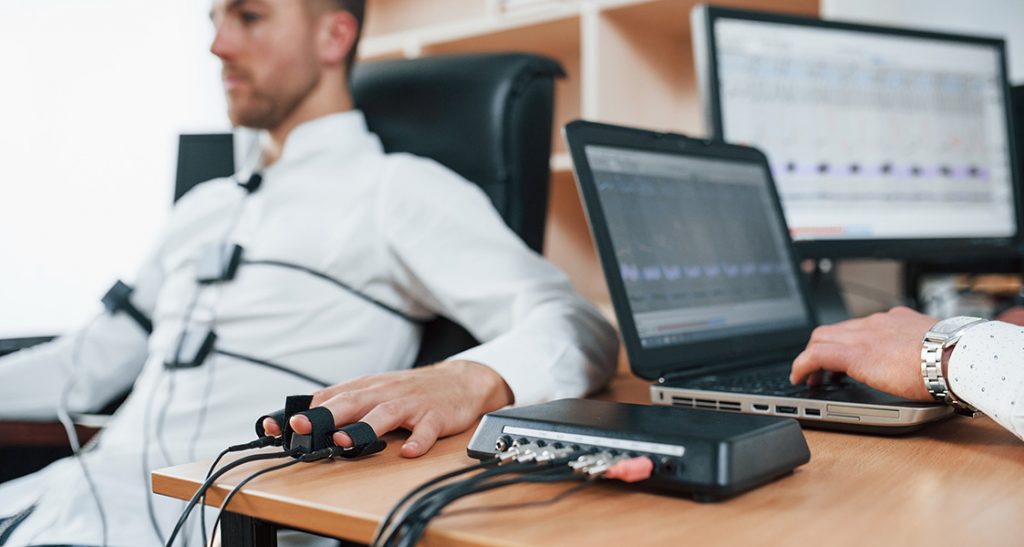Polygraph Definition
What is a Polygraph? A polygraph, also known commonly as a “lie detector,” is a device used to measure and record a person’s physiological responses to a succession of questions. A polygraph is based on the premise that dishonest responses will result in distinct physiological changes, such as variations in heart rate, blood pressure, respiration rate, and skin conductivity. It is believed that these alterations result from the emotional and physiological stress associated with lying.
Components and Stages of a Polygraph Examination
Sensors that monitor physiological functions, a computer for data analysis, and a trained polygraph examiner who administers the test and interprets the results are the primary components of a polygraph system. The polygraph examination typically consists of the following stages:
Pre-test Interview: Before the actual polygraph examination, the examiner undertakes a thorough pre-test interview with the examinee. The purpose of this interview is to establish a baseline for the subject’s physiological responses, collect background information, and formulate relevant questions.
The Polygraph Examination: During the examination, sensors implanted on the examinee’s body connect them to the polygraph machine. As the examiner poses questions, these sensors continuously record and monitor physiological responses. The questions are categorized as pertinent, control, and irrelevant.
- Relevant questions pertain directly to the issue under investigation.
- Control questions are designed to elicit physiological responses in response to general, non-incriminating matters.
- Irrelevant questions serve as a baseline to compare responses.
Data Collection: The polygraph machine records physiological changes as the examinee responds to queries, producing a graph known as a polygraph chart. Examiners trained to identify significant deviations from baseline readings analyze these charts.
Data Analysis: The examiner analyzes the recorded data, focusing on variations in physiological responses that may correspond to dishonest or honest answers. They take into account variables such as the examinee’s baseline responses, the patterns of physiological changes, and the consistency of the responses overall.
Reporting: After completing the analysis, the polygraph examiner prepares a report that includes their professional opinion on the examinee’s truthfulness or deception in response to specific questions.

Understanding the Polygraph: Applications and Legal Considerations
A polygraph is a device used to measure physiological responses during questioning based on the premise that deceptive answers will result in discernible physiological changes. It has applications in various disciplines, but its use in legal contexts is frequently limited due to concerns about its dependability. The interpretation of polygraph results requires the expertise of trained examiners, and their application in legal proceedings varies from jurisdiction to jurisdiction.
Related Articles
Related Terms
Call us today at (248) 263-6800 for a free consultation or complete an online Request for Assistance Form. We will contact you promptly and find a way to help you.







